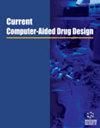基于网络药理学和分子对接的茯苓治疗自闭症谱系障碍的机制研究
IF 1.6
4区 医学
Q4 CHEMISTRY, MEDICINAL
引用次数: 0
摘要
背景:最近的流行病调查数据显示,全球范围内自闭症谱系障碍(ASDs)的患病率正在上升。目前西医多采用综合干预与康复治疗相结合的方法,但患者的治疗效果并不理想。金银花,作为配对药物使用,对大脑和肾脏有积极影响,可以提高智力,智慧和意识;然而,其潜在的作用机制尚不清楚。背景:最近的流行病调查数据显示,全球范围内自闭症谱系障碍(ASDs)的患病率正在上升。目前西医多采用综合干预与康复治疗相结合的方法,但患者的治疗效果并不理想。宝丽花,作为配对药物使用,对大脑和肾脏有积极影响,可以提高智力,智慧和意识。然而,潜在的机制尚不清楚。目的:通过网络药理学方法分析茯苓治疗ASD的作用机制及潜在的治疗效果,为该药的临床应用提供科学依据。方法:利用中药系统药理学数据库及分析平台、ChemSource.com、PharmMapper数据库获取茯茯灵对应的化学成分及靶点。使用DisGeNET、DrugBank和GeneCards数据库筛选ASD的疾病靶点。使用metscape数据库进行基因本体功能分析和代谢途径分析(京都基因与基因组百科全书),并使用AutoDock Vina和PyMOL软件进行分子对接验证。结果:分子对接分析表明,Polygala- Acorus的关键活性成分与EGFR、SRC、MAPK1、ALB等关键靶点相互作用。因此,已发现聚没食子酸、环蒿烯醇和8-异戊烯基山奈酚与EGFR、SRC、MAPK1和ALB结合的关键活性成分(西伯利亚杉烷酮A、西伯利亚杉烷酮B、tenuifolin)。结论:本研究初步揭示了金银花治疗ASD的有效成分及其作用机制,有待进一步实验验证。本文章由计算机程序翻译,如有差异,请以英文原文为准。
Mechanism of Polygala-Acorus in Treating Autism Spectrum Disorder Based on Network Pharmacology and Molecular Docking
Background:: Recent epidemic survey data have revealed a globally increasing prevalence of autism spectrum disorders (ASDs). Currently, while Western medicine mostly uses a combination of comprehensive intervention and rehabilitative treatment, patient outcomes remain unsatisfactory. Polygala–Acorus, used as a pair drug, positively affects the brain and kidneys, and can improve intelligence, wisdom, and awareness; however, the underlying mechanism of action is unclear. background: Recent epidemic survey data revealed a globally increasing prevalence of autism spectrum disorders (ASDs). Currently, Western medicine mostly uses a combination of comprehensive intervention and rehabilitative treatment, but patient outcomes remain unsatisfactory. Polygala–Acorus, used as a pair drug, positively affects the brain and kidneys and can improve intelligence, wisdom, and awareness. However, the underlying mechanism is unclear. Objective:: We performed network pharmacology analysis of the mechanism of Polygala– Acorus in treating ASD and its potential therapeutic effects to provide a scientific basis for the pharmaceutical’s clinical application. Methods:: The chemical compositions and targets corresponding to Polygala–Acorus were obtained using the Traditional Chinese Medicine Systematic Pharmacology Database and Analysis Platform, ChemSource.com, and PharmMapper database. Disease targets in ASD were screened using the DisGeNET, DrugBank, and GeneCards databases. Gene Ontology functional analysis and metabolic pathway analysis (Kyoto Encyclopedia of Genes and Genomes) were performed using the Metascape database and validated via molecular docking using AutoDock Vina and PyMOL software. Results:: Molecular docking analysis showed that the key active components of Polygala- Acorus interacted with the following key targets: EGFR, SRC, MAPK1, and ALB. Thus, the key active components of Polygala-Acorus (sibiricaxanthone A, sibiricaxanthone B tenuifolin, polygalic acid, cycloartenol, and 8-isopentenyl-kaempferol) have been found to bind to EGFR, SRC, MAPK1, and ALB. Conclusion:: This study has preliminarily revealed the active ingredients and underlying mechanism of Polygala-Acorus in the treatment of ASD, and our predictions need to be proven by further experimentation.
求助全文
通过发布文献求助,成功后即可免费获取论文全文。
去求助
来源期刊

Current computer-aided drug design
医学-计算机:跨学科应用
CiteScore
3.70
自引率
5.90%
发文量
46
审稿时长
>12 weeks
期刊介绍:
Aims & Scope
Current Computer-Aided Drug Design aims to publish all the latest developments in drug design based on computational techniques. The field of computer-aided drug design has had extensive impact in the area of drug design.
Current Computer-Aided Drug Design is an essential journal for all medicinal chemists who wish to be kept informed and up-to-date with all the latest and important developments in computer-aided methodologies and their applications in drug discovery. Each issue contains a series of timely, in-depth reviews, original research articles and letter articles written by leaders in the field, covering a range of computational techniques for drug design, screening, ADME studies, theoretical chemistry; computational chemistry; computer and molecular graphics; molecular modeling; protein engineering; drug design; expert systems; general structure-property relationships; molecular dynamics; chemical database development and usage etc., providing excellent rationales for drug development.
 求助内容:
求助内容: 应助结果提醒方式:
应助结果提醒方式:


